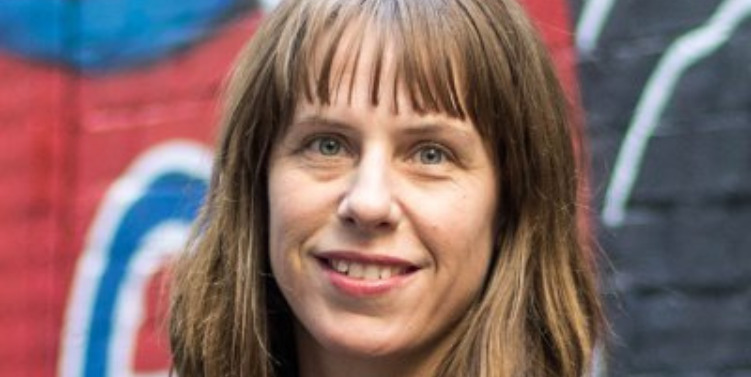Using philanthropy to build affordable housing through alternative financing pathways

The pandemic has taken over most of 2020, even more so in Victoria, with a drawn-out second wave that has crippled our economy. It was with much jubilation that last week the Victorian Government recently announced as part of their budget a $5.3 billion social and affordable housing package.
The Victorian Government will support the building of over 12,000 new homes (social and community housing) in the next four years, an enormous increase from the mere hundreds of affordable homes built in the subsequent years. To put this in perspective, the Rudd Government spent almost the same amount federally in the post-GFC period on affordable housing.
It is clear that, at least in Victoria, we intend to build back better. For those of us that use philanthropic funding to support affordable housing, the question in the pandemic recovery is – what is now our role?
The role of philanthropy
Last week, the Affordable Housing Funders Network met to discuss a report written by Sefa (Social Enterprise Finance Australia) and funded by the Lord Mayor’s Charitable Foundation. The report reviews how philanthropy can contribute to increasing affordable housing through alternative financing pathways.
Even in times of significant government investments, the role of philanthropy is critical. Philanthropic capital has many unique characteristics, particularly relevant to supporting the supply of affordable housing. Philanthropy can invest in new and innovative approaches, working at the demonstration level and scaling if appropriate. Philanthropy can ‘de-risk’ projects, signalling support for approaches through philanthropic grants and impact investments that can then leverage in other types of finance and investment. Philanthropy can also fund rigorous research and evaluations that provide the evidence base to inform policy, legislative, regulatory and attitudinal shifts. Sometimes these can lead to the creation of social impact bonds.
Below are some of the barriers to creating affordable housing, and ways that philanthropy can overcome these barriers. Note that the framework and international examples are taken directly from the Sefa report.
1. Cost of finance
Gathering finance incurs significant costs to developments. The capital ‘stack’ is like a game of Tetrix, and affordable housing developers are typically met with greater challenges than mainstream property developers.
In the US the New York Housing Acquisition Fund is an example of how philanthropic seed capital was used to start a fund that was then leveraged with private investment and structured so that the Fund can take on greater risk, offer patient repayment terms, below market interest rates and pricing incentives for not-for-profit developers. Subordinated, low-cost debt from six foundations (including the Rockefeller Foundation and the Ford Foundation) combined with first-loss capital from its lead housing agency (the NYC Department of Housing Preservation and Development) laid the groundwork for senior loans from 16 financial institutions. The Fund structure allocates the risk so that public and philanthropic dollars serve as a guarantee limiting the senior lenders’ risk exposure.
In the UK, Leeds Community Homes partnered with a commercial developer to create a CLT. Notably, financing was raised via community shares, but with help from Power to Change, a charitable trust (setup from the National Lottery Community Fund) that supports community businesses.
2. Cost of land
With Sydney and Melbourne ranked third and fourth respectively for most unaffordable housing markets in the world, reducing land cost can be the biggest factor in improving the economics of affordable housing developments. For consideration by philanthropy in Australia, is the gifting of land or making land available on long term leases, for example using a Community Land Trust approach.
CLTs are widely used in the UK and US but require significant set up and structural costs. CLTs are not-for-profit corporations that develop and steward land in perpetuity for community-serving purposes. In New Zealand, the Ngāti Whatua Orakei hapu piloted 30 new affordable housing residents for families and first home buyers with access to public transport and the Auckland CBD. Auckland, like Sydney and Melbourne, is in the top ten unaffordable housing markets in the world and many members of the hapu were living in overcrowded, damp and unsafe housing. The Ngāti Whatua Orakei Trust held land in perpetuity, using a CLT type structure.
At the Lord Mayor’s Charitable Foundation, we have been highly active in encouraging and incentivising land holders to donate or provide long-term lease via the Affordable Housing Challenge, first with local councils via long term leases (up to 49 years) and more recently with not-for-profits, including faith-based organisations. Land leases or donations can include vacant land, redeveloped building and/or strata.
3. Reducing risk
The perception of risk in housing developments adds significant costs to developments. Since land acquisition and soft development costs, such as architect, consultants, planning fees, are incurred before construction begins, traditional investors and lenders often consider pre-development and land acquisition loans to be high risk. Subsequently, interest rates are set at high levels that don’t make it feasible for smaller organisations to get projects off the ground or for innovative models to build track records.
The Arizona Community Foundation’s Affordable Housing Loan Fund provides zero interest loans to cover pre-development costs to affordable housing providers. These loans, up to $75,000 per project to not-for-profit housing developer, are not typically available through traditional lenders. Once the project receives long-term lender financing, loans are repaid to the Fund, recycling the money for new projects.
4. Return on investment
There has been significant effort in Australia to find a way to utilise our sizable superannuation resources towards the provision of affordable housing. Yet many institutional investors have the obligation to deliver profit to members and shareholders – the sole purpose test – meaning they’re unlikely to invest in housing without a market return. Interpretation of this test is under review. HESTA invested in the Nightingale affordable housing project and more could follow.
In the UK, Social and Sustainable Capital (SASC) has devised a Housing Fund that is playing a key role in addressing the issue of perceived risk and unlocking capital. The Fund absorbs the risk with buying or renting property and gives the borrower the benefit of a long-term asset ownership. Philanthropic trust and foundations in Australia should further utilise their own funds to provide similar impact investment opportunities.

What’s next?
No doubt that the Victorian Government spending on affordable housing has become the envy of other states, yet now, more than ever, philanthropy can make a difference in increasing the supply of affordable housing. Philanthropy can innovate, be agile and take risks that are unavailable in traditional financing. If proven, approaches can then be scaled up by government or impact investors.
And while we should continue to innovate, we also need to be reminded of the gravity of affordable housing need in our community. While the recent Victorian Government funding should be celebrated, it will only provide 9300 social housing units, while there are still over 100,000 households on the public housing register waiting list.
Philanthropy’s role in supporting affordable housing is far from over.
Read more in the Sefa report Exploring philanthropy’s role in addressing the affordable housing crisis: A synthesis of the evidence